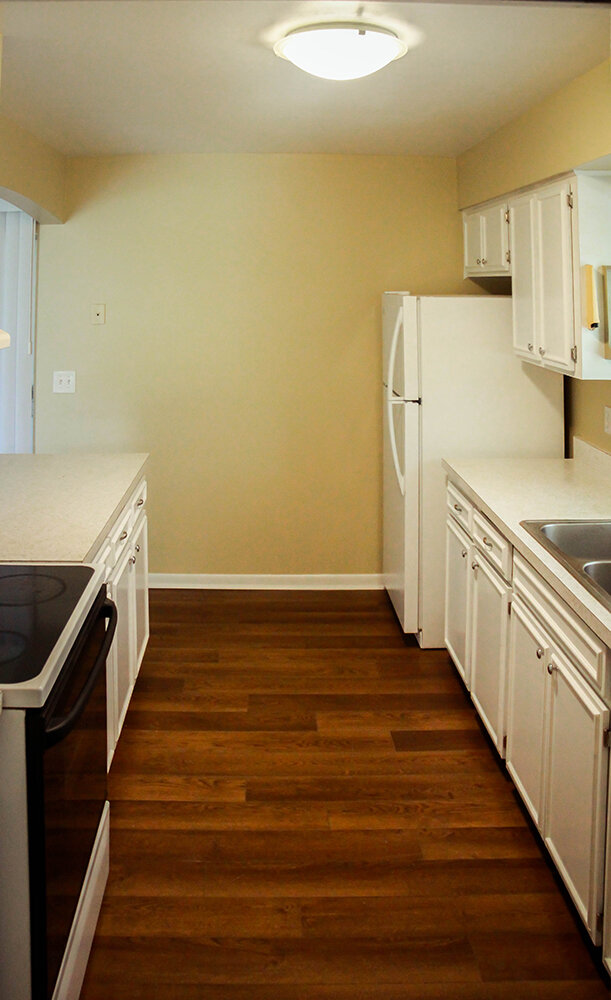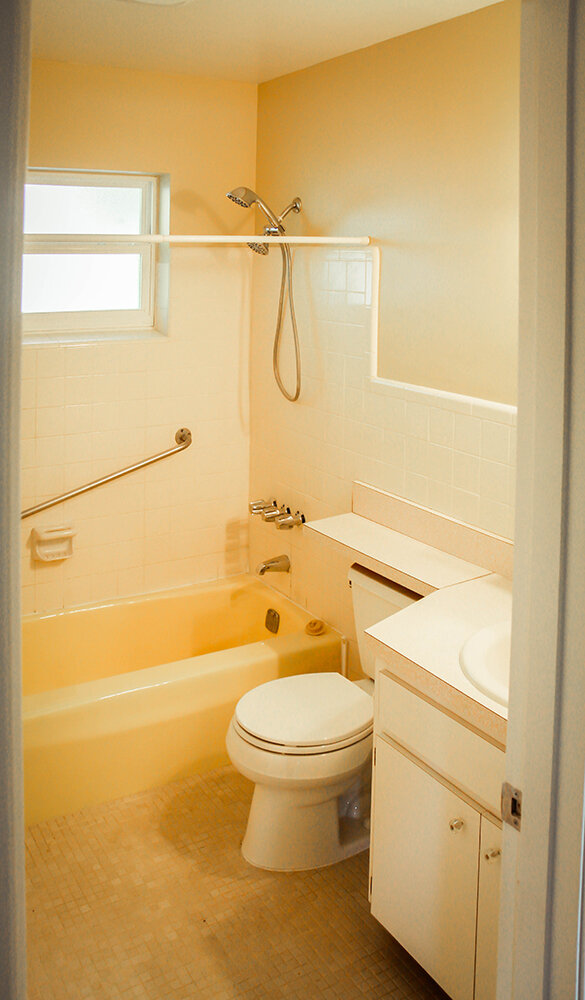INVESTOR SCHOOL: Turning a flea-infested 1970, 2-bedroom/1-bathroom into a cash flowing powerhouse
In the summer of 2019, we were given a lead on a single-family home in a neighborhood where we already owned a few rental properties. The house was being marketed by a wholesaler we’d never worked with before, so we were excited to talk with them – not only to find out the details about the property but also for the opportunity to find out more about their business and see how often they had properties available in our area.
This little 990-square-foot home needed a facelift and a visit from the bug man to deal with a massive flea infestation. © Homes by AnnDavid, Inc.
As it turned out, the home was built in 1970. It was a small, 2-bedroom/1-bathroom, concrete block house that clocked in at just under 1,000 square feet. The house was not in terrible shape, but it definitely needed updating. The couple who lived in the house at the time had made a few recent upgrades with a relatively new roof and new central A/C, but maintaining the property had become an issue because the wife had some health challenges and her husband spent a great deal of time caring for her. They had decided they wanted to move back to West Virginia to be closer to their family who could help provide caregiving support.
The wholesaler was offering the property for $55,000. After being on the premises and seeing the work that needed to be done to it to bring it up to our rental portfolio standards, we estimated we’d need to spend just under $20,000 to rehab it, and we estimated the ARV to be in the low $90k range.
Because the market was pretty competitive at the time, we didn’t negotiate on the sale price. We thought the asking price phenomenal, and we didn’t want to lose the deal to another investor while we quibbled over a few thousand dollars. It was an excellent price based on our analysis, so we made a full-price offer on the property.
Once the owners vacated the premises, we signed the paperwork and closed on the property. It was a cash deal with us using our own capital to make the initial purchase, and we self-funded the rehab as well. Our assessment of the house was that it needed new paint throughout, except for the 2 bedrooms because they’d been recently painted. It needed new floors throughout to cover over a badly damaged terrazzo, which was original to the property. Along the way, someone had carpeted over the terrazzo resulting in scarring and cracking that we didn’t feel could be economically repaired.
The house also needed new windows, a new hot water heater, an update to the electrical panel, a refresh of the exterior with new stucco and paint, and an immediate pest control treatment to get rid of the flea infestation that was wreaking havoc on the legs of everyone who entered the property. There were a few other odds and ends, but those were the major issues we wanted to tackle.
We closed on the property at the end of August, and we projected a 6-week turnaround on the rehab, which put us at mid-October to be ready for rent.
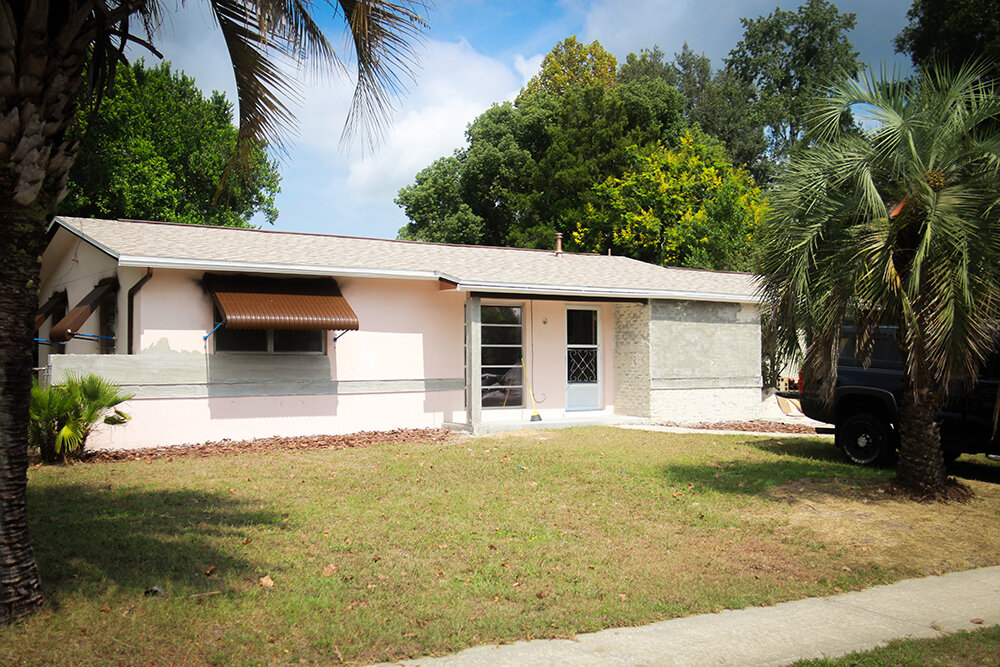
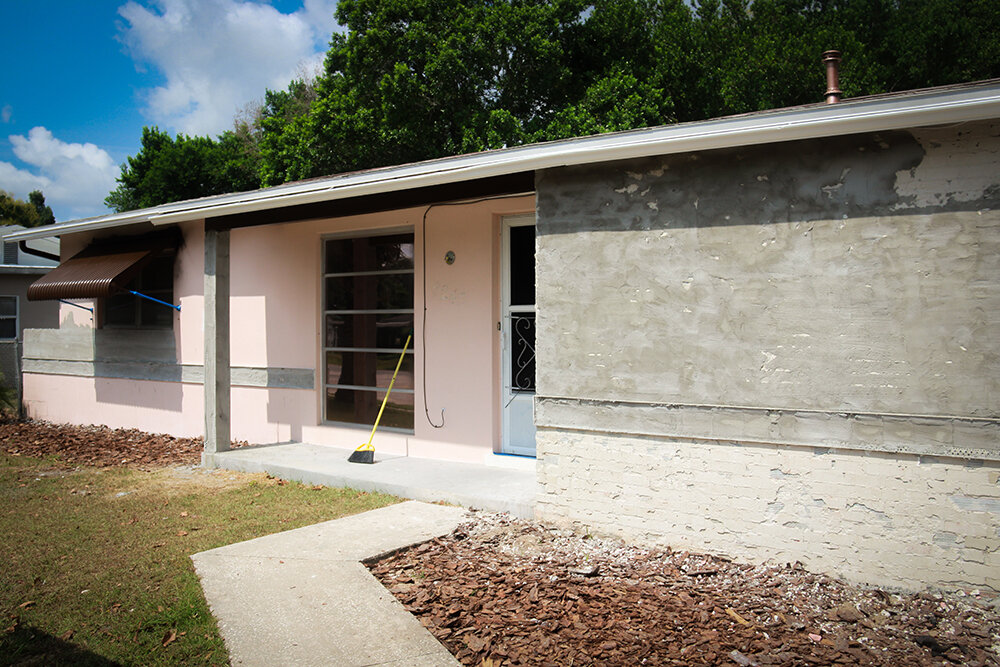
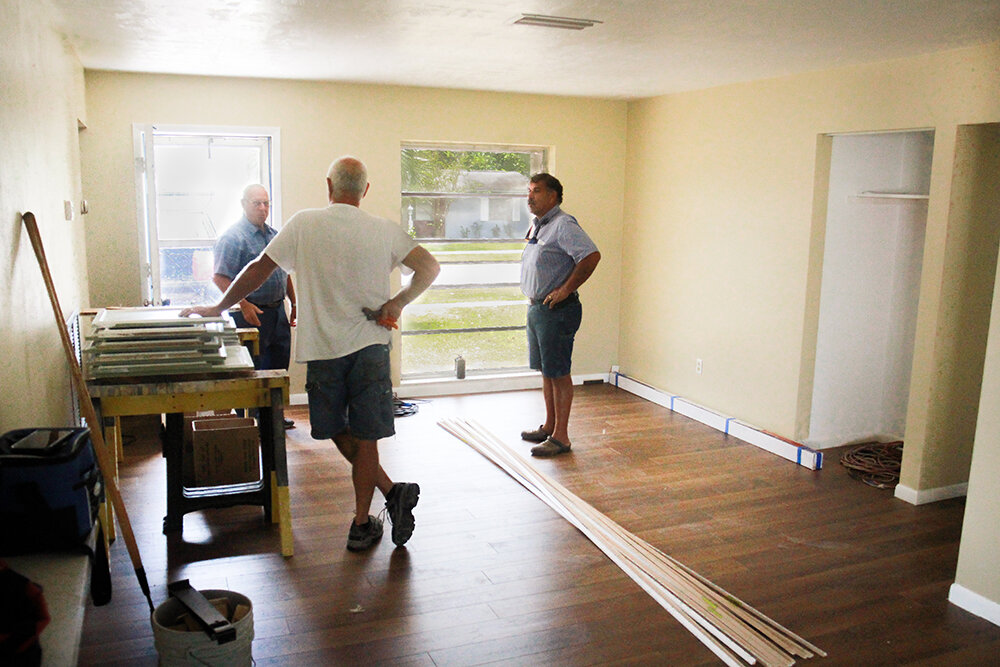
The biggest portion of the rehab was on the exterior with new stucco, decorative accents, and paint. On the interior, the addition of new windows and vinyl flooring made up the bulk of the work.
The biggest jobs were the improvements to the exterior of the property. We wanted to remove some painted brick accents from the facade and add fresh stucco and accent bands in their place. The demo work/removal of the bricks began, and at the same time, we also began replacing the windows so they’d be installed by the time we were ready for stucco.
On the inside, we laid down new vinyl flooring in every room except the bathroom. In the utility/laundry room, we installed the new water heater as the old one was pretty well shot, and much too small by modern standards. Plus, the wiring for the water heater was worrisome, so we had work to do updating that along with the electrical panel.
There was very little the kitchen needed. Everything was in decent shape, but the cabinets needed attention. We made minor repairs to those and gave them a makeover by sanding and painting them for a more modern, updated look. The only other addition here was a new refrigerator.
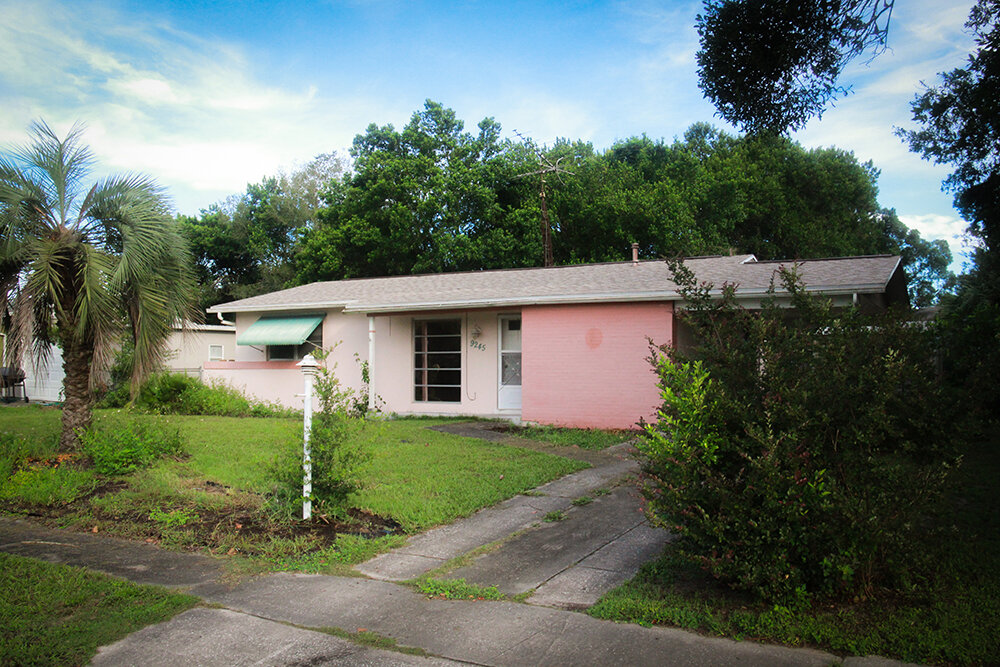
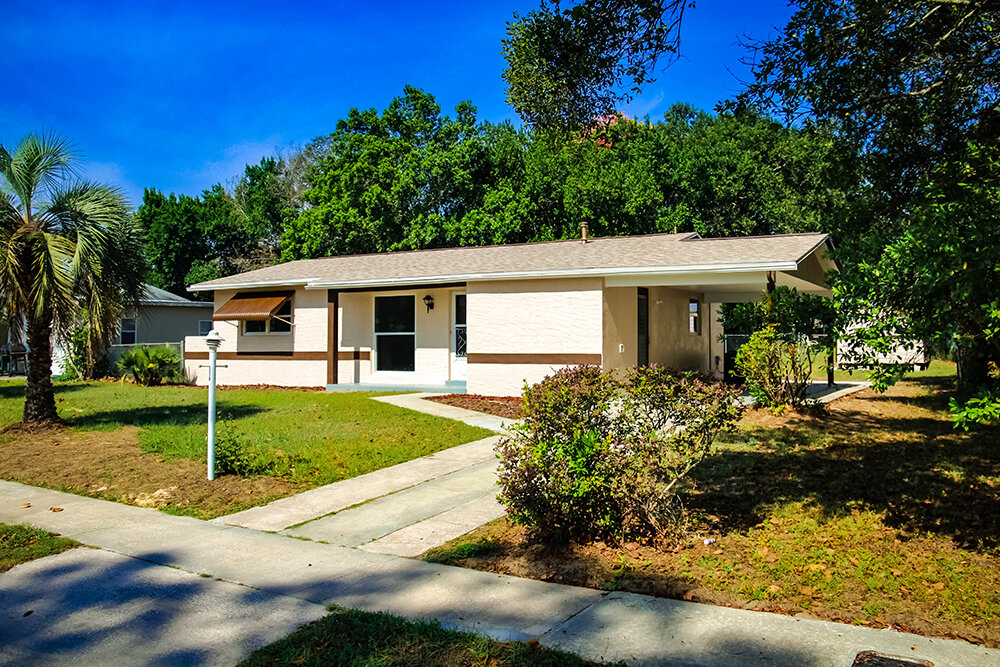
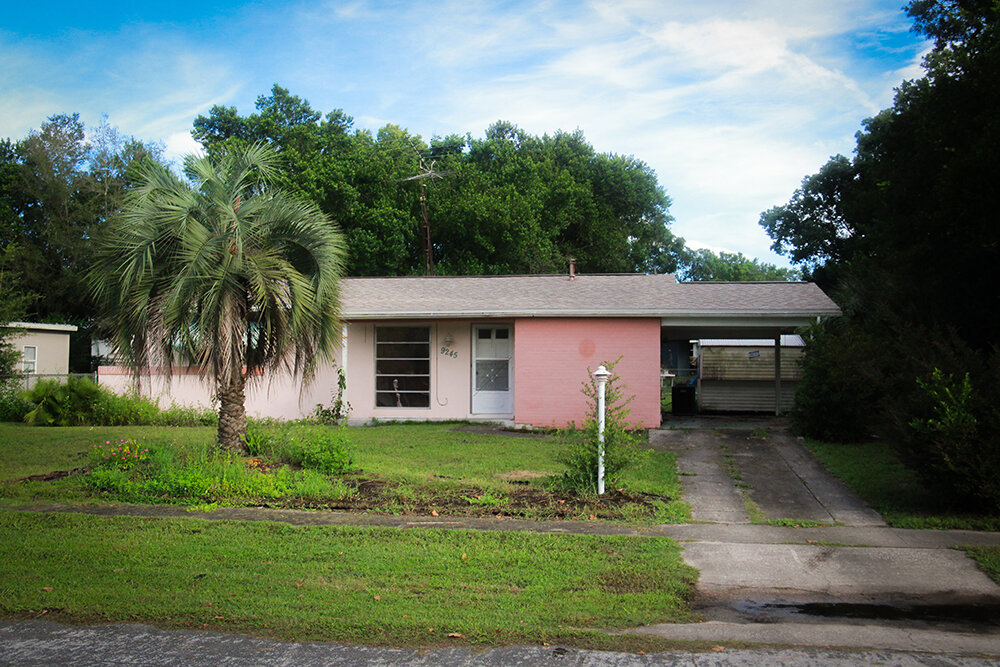
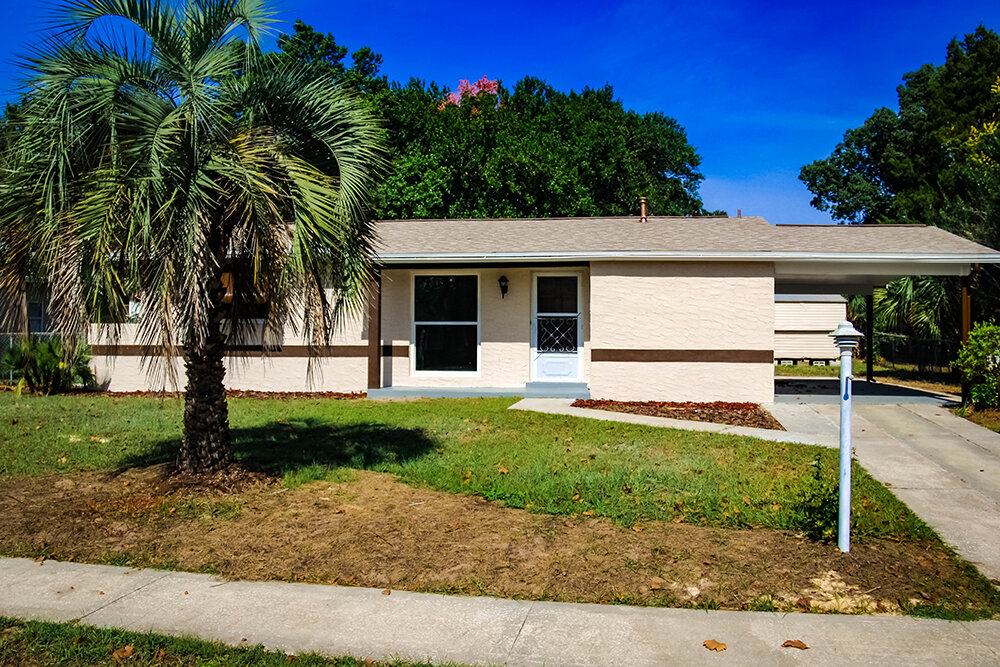

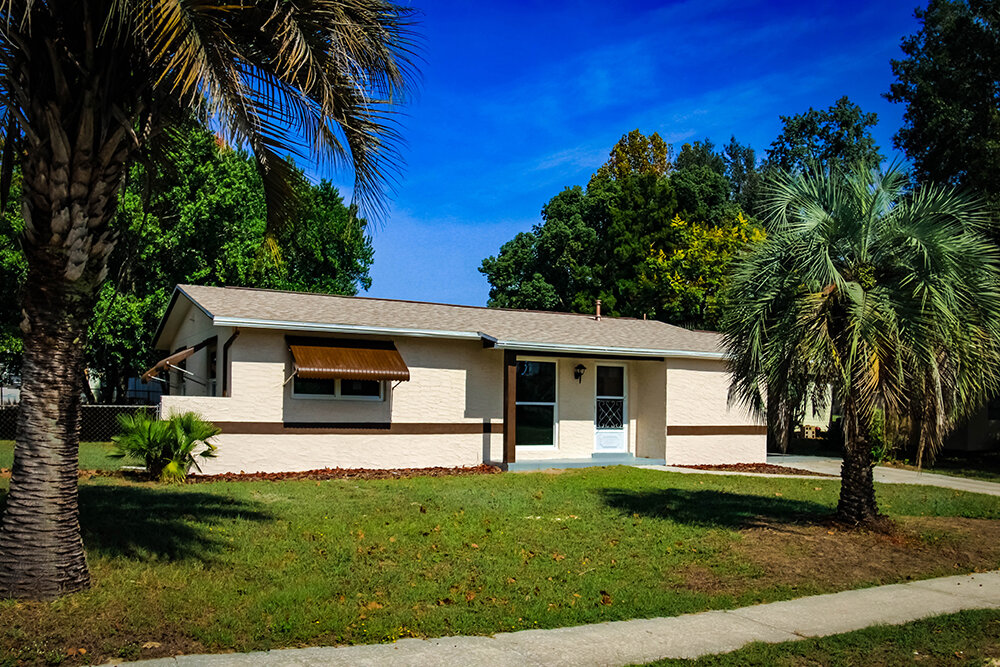
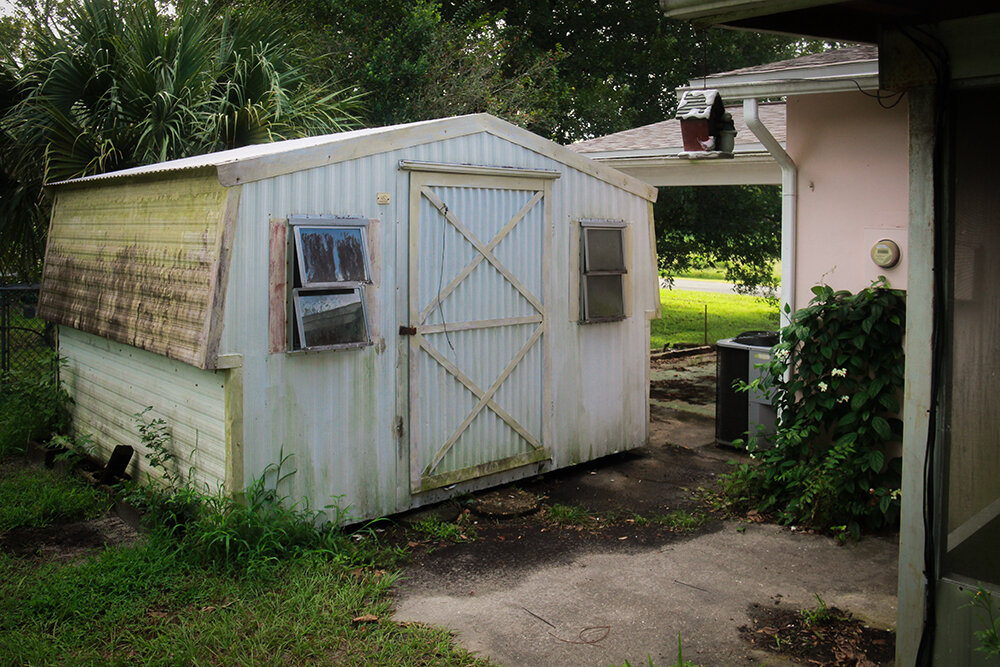

Fresh paint and new stucco brightened up the exterior of the house, and the little storage found a new home in the back yard along with new paint of its own.
We painted the entire interior with the exception of the bedrooms, which the previous owners had recently painted. We weren’t wild about the colors they’d chosen, but we couldn’t justify the expense because of how recently they’d been painted. We did add new ceiling fans in the bedrooms as well as in the living room, and we added mini blinds to all the new windows. Additionally, we made minor fixes in the bathroom.
When all was said and done, we spent just over $18,000 on the rehab, which was in line with our projections at the start of the project.
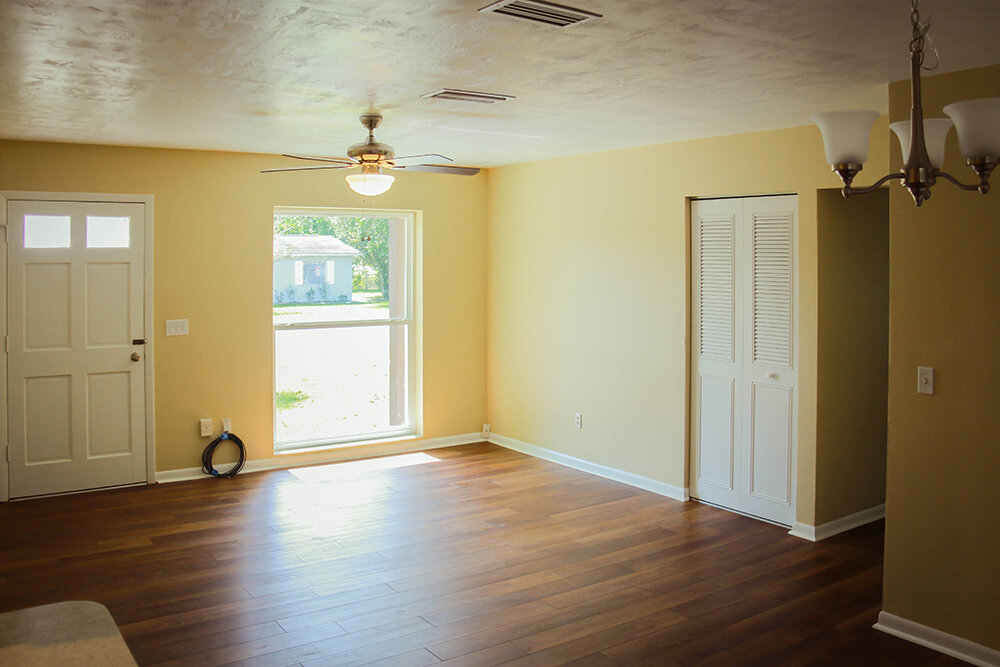

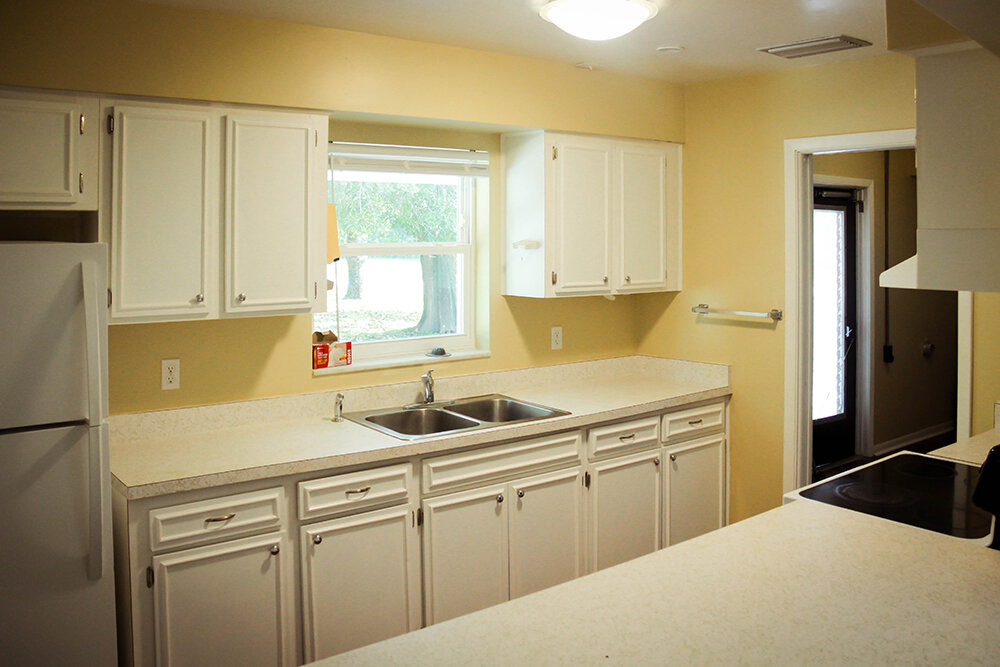
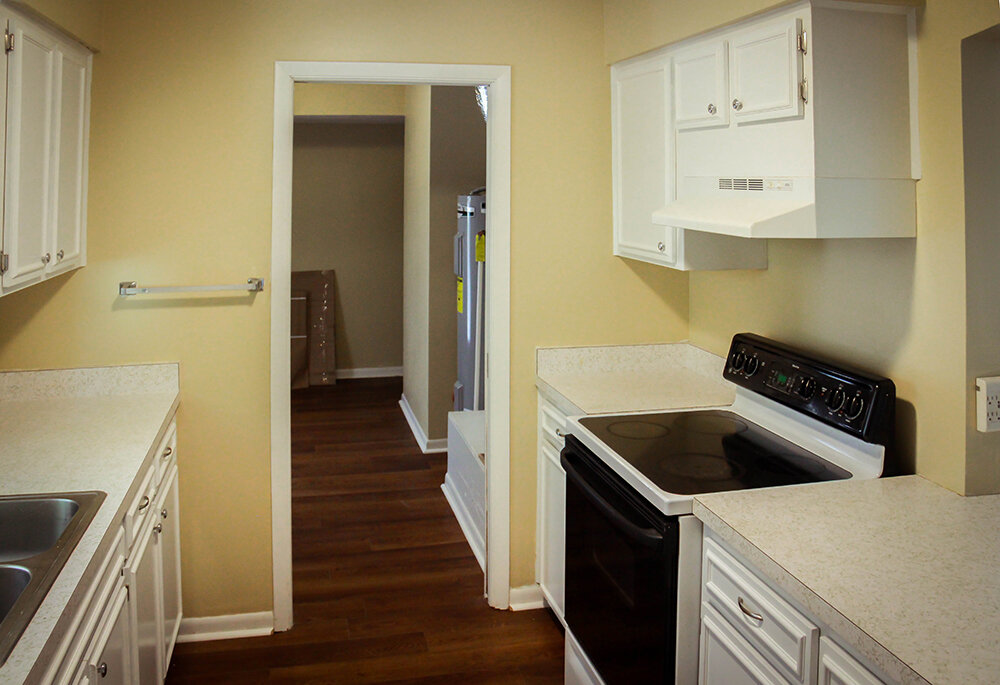
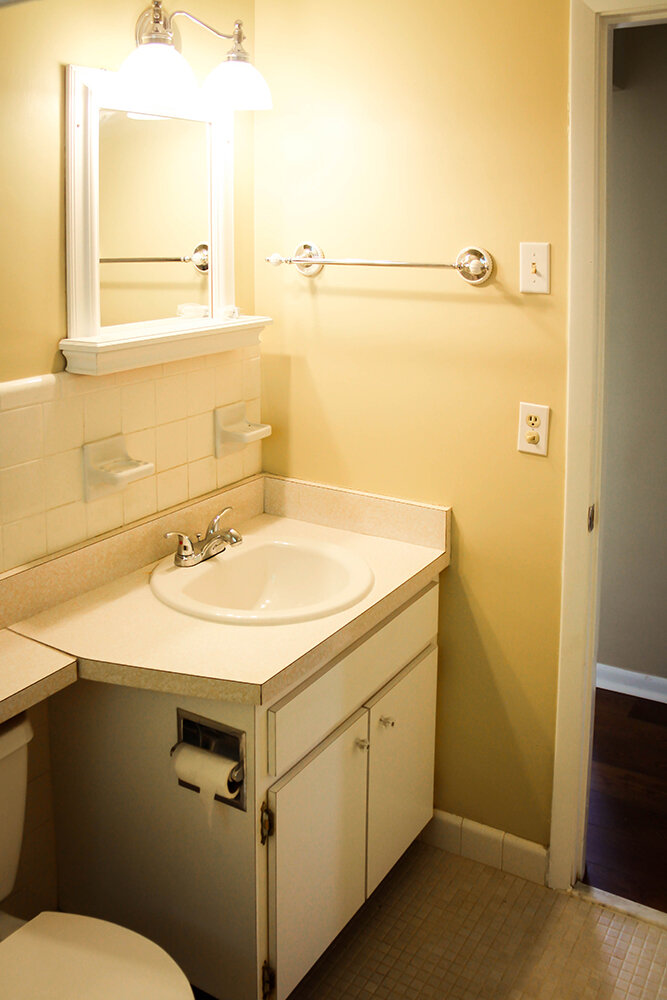
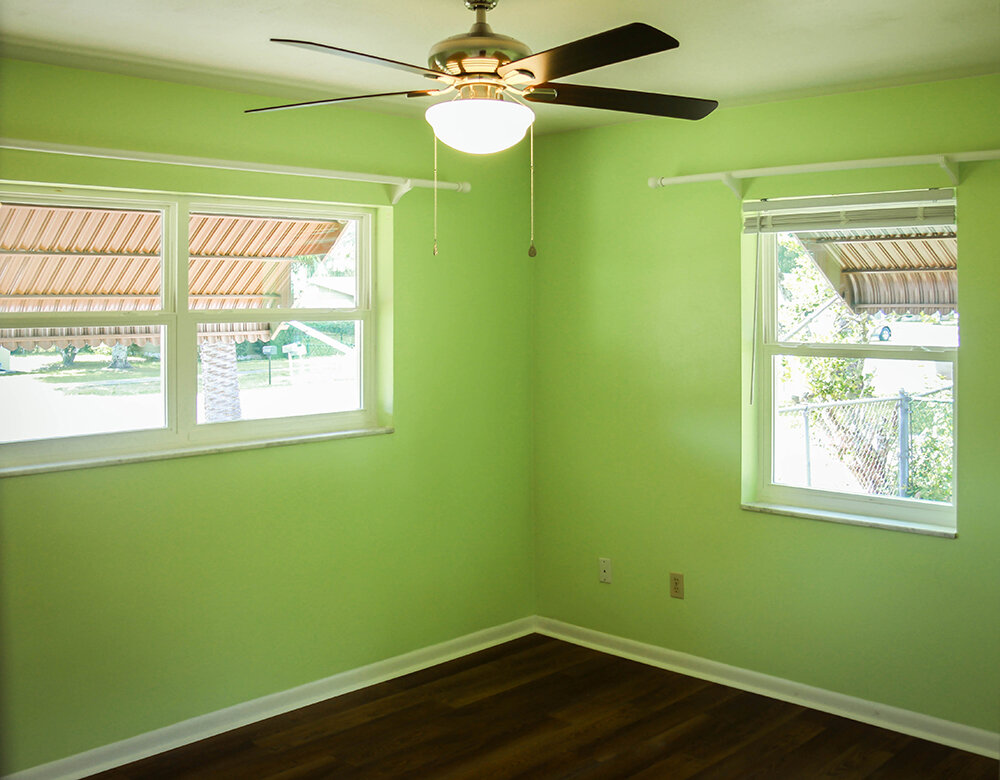
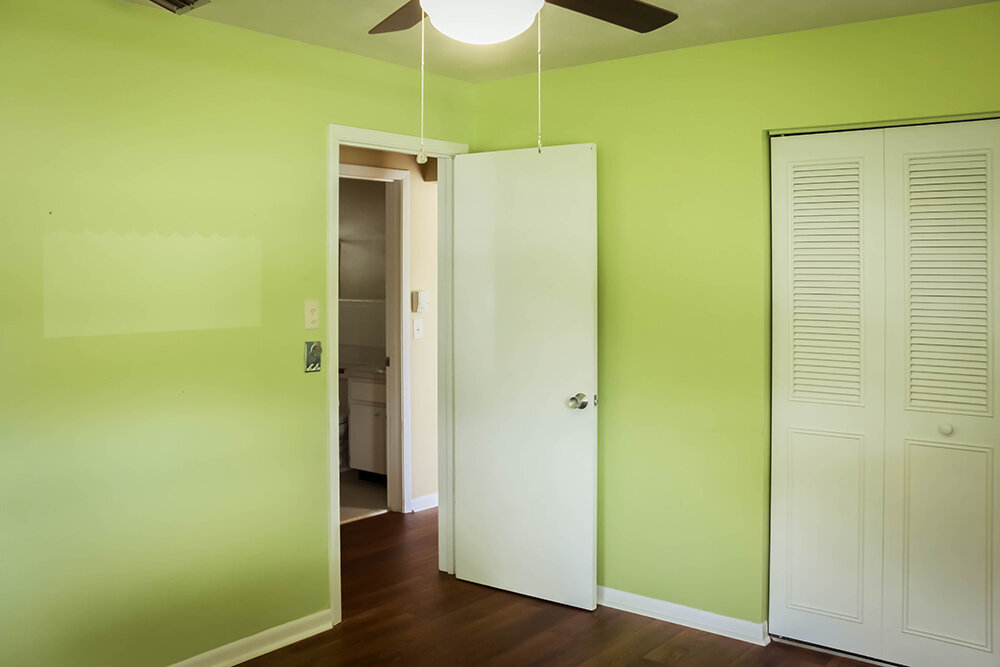
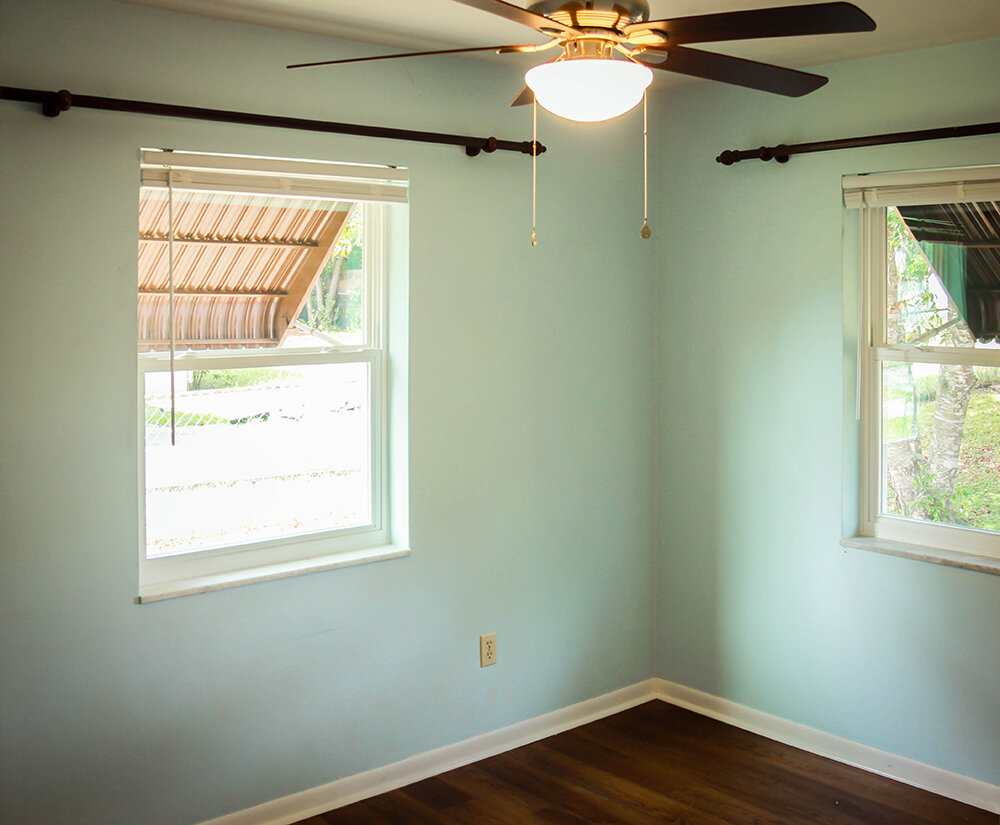
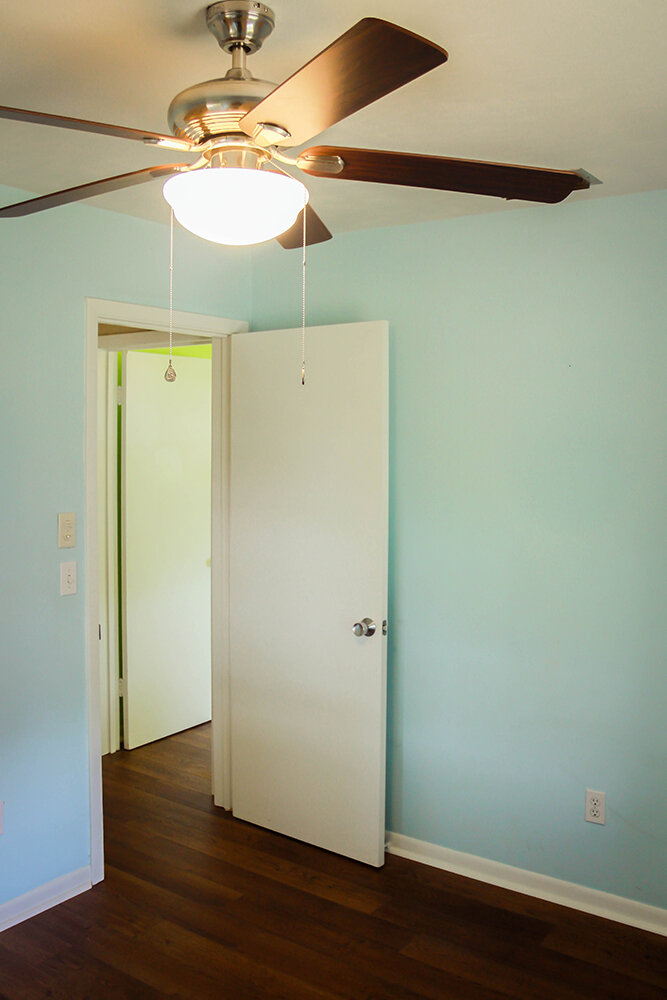
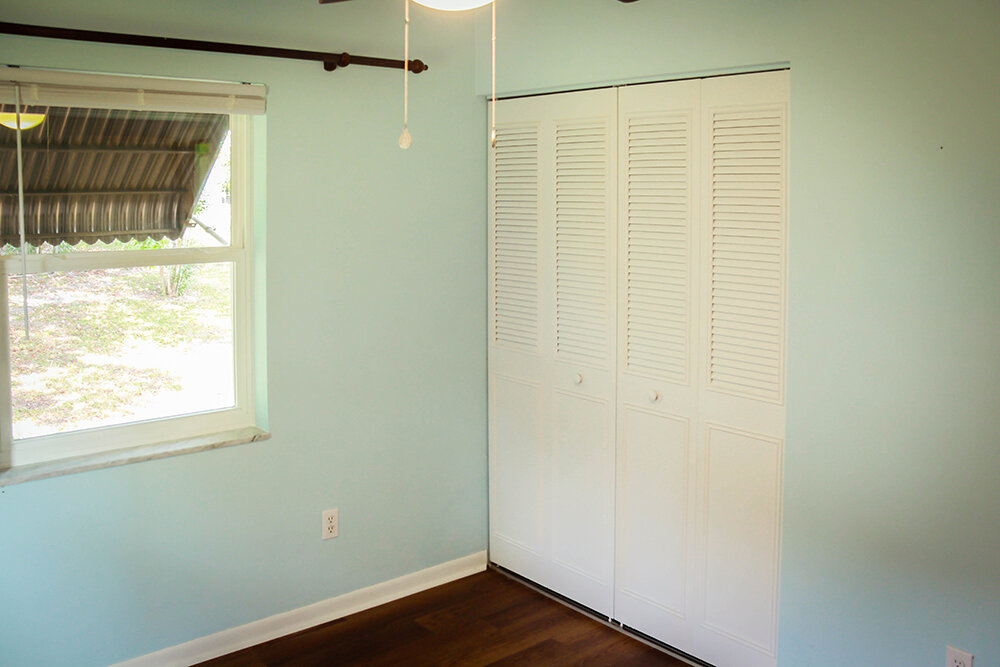
We added new vinyl plank flooring throughout the house. Every room got fresh paint except the two bedrooms, which the previous owners had recently painted. The look of the kitchen was updated by refinishing and painting the existing cabinets as well as adding a new refrigerator.
Extracting our principal
Once the renovations were complete, we decided to get our initial purchase price back out of the property by rolling into a 20-year mortgage with one of the lenders we use frequently. With the paperwork on the mortgage signed, we extracted our $55,000 out of the property, which left us with only the rehab costs in the deal.
Additionally, the appraisal the bank had performed for the loan process came back with a value of $96,000, giving us $41,000 worth of equity in the property. That was in 2019, and the value now hovers around $125,000, making our equity in the property $70,000.
Best of all, though, is the cash flow this little property throws off for us. We LOVE cash flow. All our properties MUST be cash flow positive. It’s one of the key investing tenets of our overall investing strategy. The current rent for the house is $950 per month. Insurance is approximately $60 per month, and the taxes are around $80 per month. When we allow for our vacancy of $95 and monthly maintenance expenses of $48, that gives us a cap rate of 14% on our purchase price. Include the monthly mortgage payment of $395, and we have a monthly cash flow in the neighborhood of $275.
Will this property alone make us rich? No, of course not. But the key to rentals is volume, and this little property adds a tidy $3,300 in profit to our rental portfolio and gives us $70,000 worth of equity on our balance sheet. For a more in-depth look at the numbers on this house, take a look at the graphic below.
Inside the Numbers
We actually put most of these charts together for our lender when we were going through their loan process. Of course, you want to run the numbers before you make an investment in any real estate purchase, but it’s also a fantastic exercise to repeat the exercise when the project is complete. It’s a great teaching and evaluation tool to see how closely your initial estimates match up with the final results, and you can use the lessons learned on the next deal.
Click to enlarge
We hope you found this case study helpful. We intend to provide more deal analysis like this in the future because we love being real estate investors, and we want to share our knowledge and experience with anyone interested in becoming an investor themselves. Real estate affords so many money-making opportunities to investors – the possibilities are almost limitless. The chance to learn, to be creative, and the thrill of putting together deals that work for everyone involved make it an exciting and satisfying profession.


